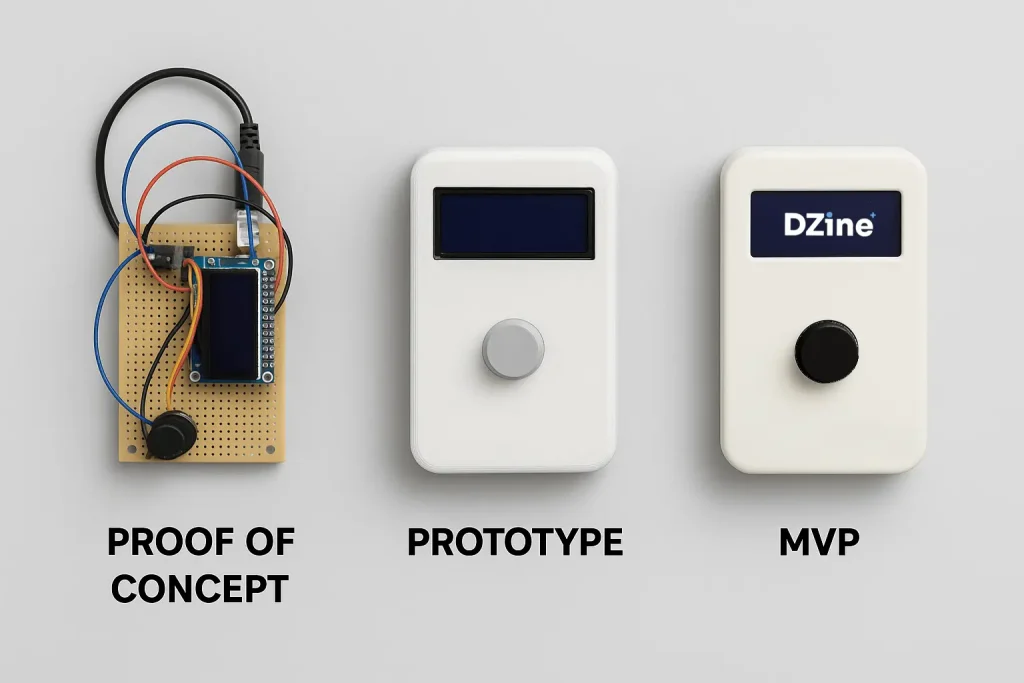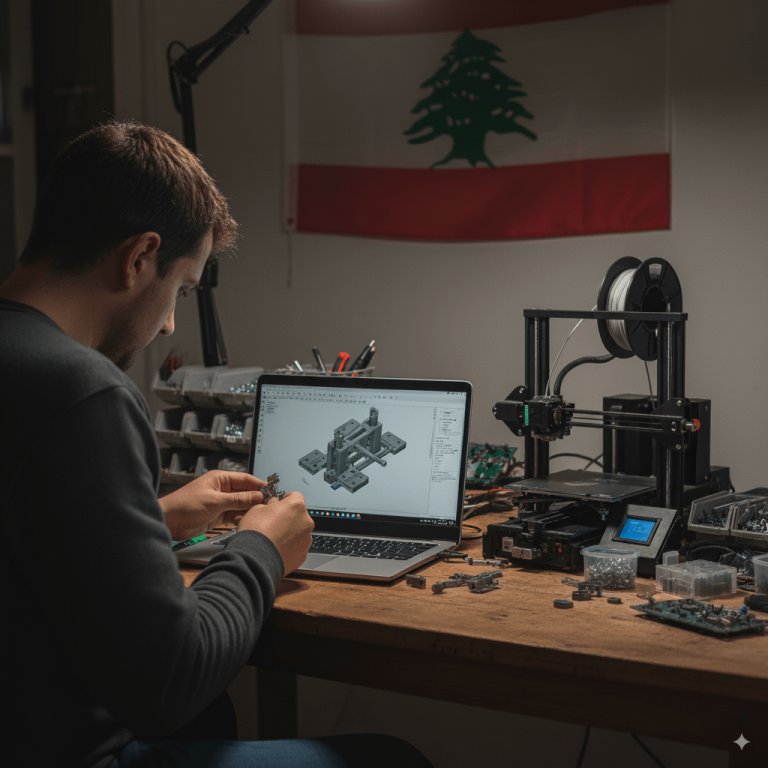Bringing a hardware product to life isn’t just about having a great idea. It’s about building the right version of that idea at the right time. And that’s where most startups go wrong.
Too many founders jump into building an MVP before validating the tech. Others over-polish a prototype and waste months perfecting something no one actually wants. If you’re confused about the difference between a proof of concept, a prototype, and an MVP, you’re not alone.
This guide breaks it all down so you can stop guessing, start building, and move faster.
What’s the Difference Between PoC, Prototype, and MVP?
These terms get thrown around a lot, often interchangeably. But each one serves a specific purpose in your startup journey.
Let’s define them simply:
Stage 1: Proof of Concept (PoC)
Goal: Prove that the core idea is technically feasible.
A proof of concept is the earliest version of your idea. It doesn’t have to look good, feel good, or even work in a way users can touch — it just has to answer one question:
Can this work?
You’re testing the physics, mechanics, electronics, or technical assumptions behind your product.
Examples:
- A 3D-printed gear system to test motion
- Breadboarding a basic circuit to see if a sensor setup is viable
- Testing if your folding hinge can hold a specific load
Tools we use at Dzine⁺ for PoC:
- Quick CAD mockups
- Breadboards and Arduino
- Basic structural stress analysis
⚠️ Founder’s Mistake #1: Skipping the PoC and assuming the tech will “just work.” That assumption is expensive.
Stage 2: Prototype
Goal: Test how your idea looks, feels, and functions in the real world.
A prototype is where your idea starts to take shape — literally. Now you care about form, function, usability, and interaction.
You’re not just asking, “can it work?” You’re asking, “will people understand it?” “Does it feel right in the hand?” “Can it be assembled easily?”
This stage is critical for:
- Testing fit and ergonomics
- Simulating the user experience
- Iterating design flaws before manufacturing
Common prototyping methods:
- 3D printing for enclosures and moving parts
- Laser cutting for panels and electronics housing
- CNC machining for higher-precision pieces
Pro Tip: You don’t need a polished prototype. You need one that gives you answers.
Stage 3: MVP (Minimum Viable Product)
Goal: Validate that real users will use (and ideally pay for) your solution.
The MVP is your first version made for the real world. It’s functional, testable, and simple — just enough to gather feedback, secure pre-orders, or pitch investors.
For hardware startups, this might mean:
- A small production batch (5–50 units)
- Final materials or production-grade components
- Packaged enough to simulate a real customer experience
MVPs help answer:
- Will users use it?
- Will they pay for it?
- What breaks in the real world?
⚠️ Founder’s Mistake #2: Over-building the MVP like it’s a final product. You’ll waste money and delay feedback.
So… What Should You Build Right Now?
Here’s a cheat sheet:
| If you’re asking… | You need a… |
|---|---|
| “Will this idea technically work?” | Proof of Concept (PoC) |
| “Will people know how to use it?” | Prototype |
| “Will people buy or use it for real?” | MVP |
Still not sure? You’re not alone. That’s where product development teams like Dzine⁺ come in — we help you figure out what to build now based on where you are and what you’re solving.
Top 3 Mistakes Startups Make in Early Prototyping
- Jumping straight to MVP without testing functionality
- Over-polishing early designs before validating interest
- Ignoring manufacturability until it’s too late
Avoid these, and you’re already ahead of most founders.
Final Thoughts: Build What Makes Sense — Not Just What Looks Good
Startup success isn’t about having the best-looking product. It’s about building the right thing at the right time — and learning fast. Whether you’re still sketching ideas or already knee-deep in CAD models, the path forward depends on where you actually are.
At Dzine⁺, we help startups like yours go from napkin sketch to real, functional product — fast. Whether it’s a PoC, prototype, or MVP, we’ll help you take the next smart step.




